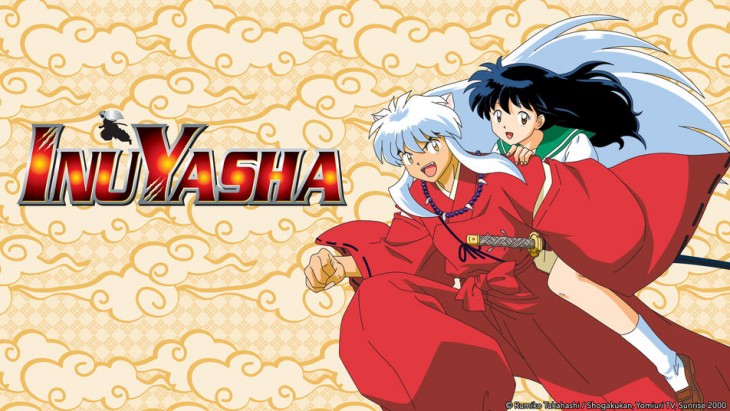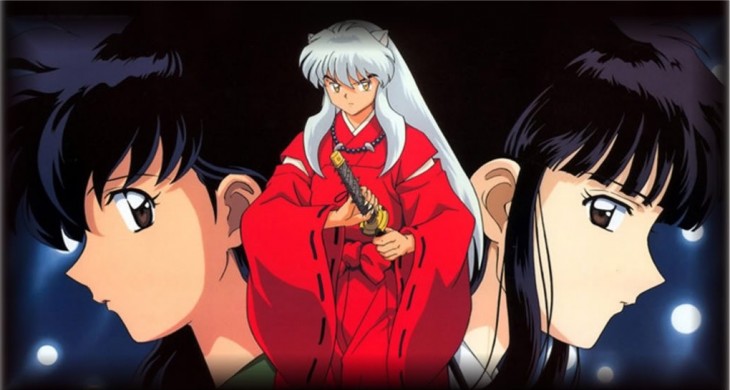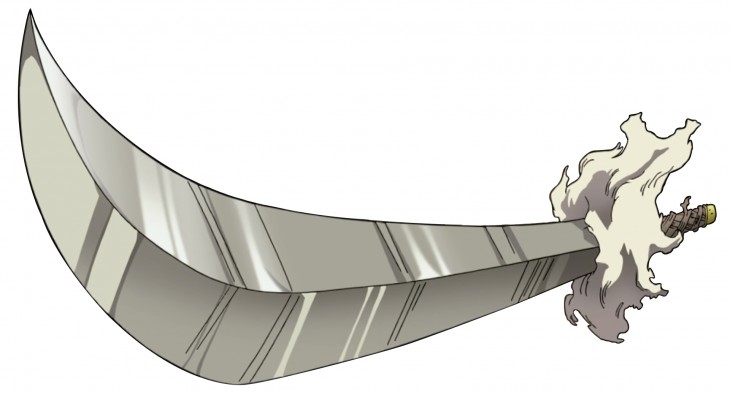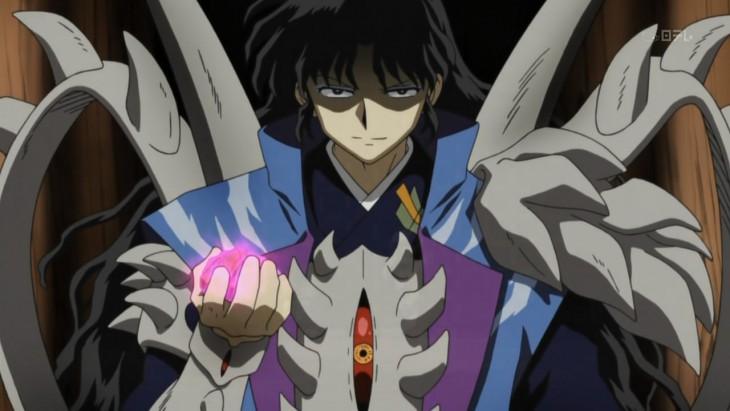It Has Everything I Hate. And Yet…

I find it delightful. Though so much about it means I shouldn’t.
Good afternoon, Readers!
I have been, for the past week and a bit, binge-watching InuYasha (English subs, as I much prefer the voice acting in Japanese). It is a series I began long ago, then just stopped watching. When I saw that Netflix had it, I decided to give it another go. After all, I had vaguely fond memories of it. Let me tell you, I am finding it absolutely delightful, even though it is choc-full of all the tropes that I generally despise. I’m struggling to figure out why I like the series so damned much. Make no mistake. I do. I have finished all the episodes in the original seasons, watched all of the movies, and am not far off finishing The Final Act, where the story is finally, after a long break to permit the manga to catch up, coming to a close.
There is so much about this show that I shouldn’t like. Yet somehow… well, I absolutely love it. To the point where I’m considering buying the whole lot on Blu Ray to binge whenever I please without fear of my streaming services dumping the series after a while (as they so often have with various shows).
First, let’s start with the trope I despise the most in any medium. The love triangle.

This is such a tired trope. It usually makes me roll my eyes so hard I give myself a headache.
This trope, so often overplayed, would probably be more enjoyable if it wasn’t used all the damned time. In this particular anime, two women, the priestess Kikyo, and her reincarnation Kagaome are in love with InuYasha. Yes, both exist at the same time in the same place. It’s complicated. Basically, Kikyo was killed before the main action of the story takes place in Japan’s Feudal Era. She is reincarnated into present-day Kagome, who falls into a magic well and is transported to the Feudal Era… after which Kikyo is resurrected with some demon magic and so now the two coexist in the same time and place. Following?
Anyway, both are very much in love with InuYasha, and there is significant tension between the two women. Kikyo spends much of her early resurrected life trying to make InuYasha hers – willing him to die with her (again?) – or trying to get rid of Kagome somehow. She is quite the antagonist to Kagome for a while there.
InuYasha for his part, cannot for the life of him choose between the two women, which creates a whole bunch of needless brooding, will they/won’t they dynamics between Kagome and himself, and of course two women fighting over some guy. Eye roll.
That normally bothers the hell out of me.
However.
For some reason, it really seems to work in this story. InuYasha’s love for Kikyo, even after she turns into a hollow shell of her former self, is actually quite sweet. That he also loves Kagome is also weirdly sweet. It also provides a good vessel for proving Kagome’s character – an impossibly sweet, yet fiercely brave, young woman who would rather sacrifice her own happiness then see the man she loved be hurt.
Perhaps because the writers have cleverly added a great deal of levity to the situation (not always, mind), and created some genuinely funny interactions between the members of this triangle. Perhaps it works because it’s not the only love triangle in the story. InuYasha’s father loved a human woman, Izayoi, who was loved by a Samurai Takemaru no Setsuna. Then there was Onigumo, who desired the priestess Kikyo so much he gave his body and soul to demons in order to become powerful and acquire her, becoming the main villain of the piece, the demon Naraku (who would much rather kill her). Kikyo is not the only one in InuYsahs’s love triangle involved in another love triangle. Yoga, a wolf-demon, is in love with Kagome, and that causes a great deal of friction between himself and InuYasha. And also a lot of hilarious moments (one of my favourites is he and Koga just yelling ‘idiot’ to one another when Kagome hugs InuYasha after believing he’d died. I legitimately laughed out loud).
It shouldn’t really work, but the writers of this series have managed to strike a fine balance that turns this trope from the usual dull attempts at romantic tension into something genuinely interesting and heartfelt.
The love triangle is not the only matter of the heart that leans heavily into the trope-bush, and still somehow works. Unrequited/forbidden love is another trope that usually annoys me, but somehow works here.

Kagura and Lord Sesshomaru, who was uncharacteristically tender in this moment.
Can I just say that the hero pining for the heroine (and vice versa) is also a little overdone in a lot of stories. It, too, usually makes me want to throw stuff at the screen. And yes, as I find myself saying often about this series, in InuYasha, it really works. Unrequited love, or unrequited desire to be more precise here, is the thing that begins the whole story, really. Without it, Onigumo would not have sacrificed his albeit broken body in pursuit of power. Perhaps because the entire series kicks of like that, it feels more natural in the story as a whole?
Koga’s love for Kagome is unrequited, though she never once fails to help him when he needs it. Koga himself is the object of affection of another wolf-demon named Ayame. Lord Sesshomaru, InuYasha’s half-brother (and the single-most compelling character of the series, for reasons that would take far too long to explain in this blog post), seems to become the object of affections for practically every non-major woman he comes across. There was a princess who, like Onigumo, permitted demons to take her body and consume her soul on her deathbed for love of him. She later is freed of the demons by Sesshomaru and dies happily, as her wish to tell him how she feels was granted. Kagura, an incarnation of Naraku, falls in love with him, too, and dies happily, her last words being, “It is enough to see you one last time.” or something to that effect. I would even go so far as to say that Lord Sesshomaru’s vassal, a weird frog-like demon named Jakken, is madly in love with the man. That, though, is played for laughs.
Even Kagome feels her love for InuYasha is unrequited, which it is… sort of. That one’s more complex.
As far as forbidden love, there are really only two examples I can think of. One happens mostly off-screen between InuYasha’s demon father and his human mother. It results in the demon’s death as he rushes, wounded, from one fight, to protect her from her jilted human suitor; both of whom are killed as a result. The other is between two members of InuYasha’s party – the demon hunter Sango and the lecherous monk Miroku (the lechery is played for laughs, because har, har, isn’t sexual assault funny? That’s the only thing that I found truly bothersome about this series). At least in the last one, after more than enough push and pull, both Sango and Miroku admit their love for one another, but decide that they will not do anything about it until Naraku is destroyed.
Again, for some reason I haven’t yet been able to discern (I’ve not quite finished the series, and haven’t been able to step away from it long enough to properly analyze it), it just works.
The last trope that usually annoys me is the ultra-powerful weapon.

The Tessaiga: the ridonkulously large and overpowered sword left to InuYasha by his father.
The Tessaiga, a demonic sword that has the ability to absorb and use other demonic powers, is a weapon coveted by Sesshomaru, who feels that as his father’s oldest son and a purebred demon, it should have been left to him (his own sword left to him is ‘the sword that cannot cut’) and wielded by InuYasha, is a magic sword along the lines of Excalibur in the Arthurian cycle. It even is stuck inside a rock, resistant to being withdrawn by anyone except its true owner. Sesshomaru himself cannot even so much as touch it without getting burnt (and ho boy, is he ever bitter about it), even after its been drawn from the stone.
What makes this trope work, however, is that InuYasha doesn’t become a demon-slaying prodigy all of a sudden as soon as he acquires the Tessaiga. He must learn how to wield it. Until he does, the sword is next to useless. More, it’s a progressive thing. The more he learns, the greater demons he can slay. The greater the demon, the new and greater power the sword absorbs, the more InuYasha must learn in order to properly wield it. That, by the way, is a gross oversimplification of the mechanic.
In addition, I think that the sword being the largest (but by no means the only) point of contention between the two sons of the Great Dog Demon makes it a trope I can stomach a bit better than the usual ‘acquire magic sword, beat all the things” kind of trope this usually is. The sword adds complications to InuYasha’s life and relationships. For most of the series, Sesshomaru plays the antagonist to InuYasha. He’s not a villain, per se, he’s just not on his brother’s side (even though they’re hunting the same prey) for most of the series… and even that is complicated as sometimes Sesshomaru will put himself in harm’s way to protect his half-brother, while at other times doing his utmost to kill him. Sometimes he’ll leave his charges in the care of InuYsha and his friends, trusting they will be safe, while noting that his half-demon brother is unworthy and weak. Siblings.
None of these tropes generally work for me in a story. If the writing is good enough, I can overlook them, though I rarely enjoy them. In InuYasha, I’m enjoying them. I’m not sure why, exactly. It shouldn’t work, given my disdain for these tropes in general. But they do. Perhaps is the combination of tropes. Perhaps it’s the way they’re twisted slightly (or a lot). Perhaps it’s the amount of levity, and the unexpected places that can be found in the series. Maybe I’m just getting soft in my old age. I’m not sure yet, and I probably won’t be until I’ve had some time to stew on it.
I can tell you that there is a great deal about the series that I really like.

Naraku in his final form.
I won’t go through all the things I love about the series, I’ve already spoken about the compelling character that is Sesshomaru, and the levity in the series that is charming and often laugh out loud funny. I’m enjoying immensely the idea that no one person is an island, and that group effort is required to take down the greatest evil known to man and demon. I like the idea that demons are not inherently evil, though many are, and that humans are not inherently good, though many are.
What I like best about this series, however, is that it is dark. The cutesy animation style, and moments of adorableness and hilarity would fool a lot of folks into thinking it’s just a light family-friendly anime. Sure, it’s light on the gore despite all the violence. To be honest, the cute moments are many in comparison to the not-so-cute ones. But there are some dark, dark things about this anime, and I love it. Onigumo’s lust for Kikyo is vile as hell. Shippo, the fox demon child who becomes a part of InuYasha’s gang of Naraku-hunters, sees his father’s pelt wrapped around the waist of another demon. Sango’s brother Kohatsu, possessed by a demon, slays his entire clan, and later wakes to that realization and spends the rest of the series in agony over it. There is a resurrected human who falls “in love” with InuYasha, whose greatest desire is to make InuYasha scream while he is tortured. It’s literally said in the series that it turns him on. And he makes a good try of making InuYasha scream. There are some dark, dark things in this series.
The writers and animators have done an exceptional job in balancing it all, it has to be said.
There is a great deal about this series that I haven’t covered, because the series is long, and this blog post is already getting to be wordy. If my current InuYasha obsession is still holding strong in a fortnight, I will do a deep dive into Sesshomaru and why I personally find him such a compelling character.
For now, though, I’m interested in what you think of InuYasha. Have you seen it? Do you plan to? If so, why or why not? Right, I’m going to go obsess less publicly. I’ll see you in the comments (maybe).
An InuYasha deep dive is about the last thing I expected to see, but it’s a welcome one.
I got the opening episode and random ones here and there on Adult Swim in the early 2000s. But it was only because I was waiting for Trigun and Lupin to come on.
I never really gave it a chance beucase the few episodes we watched made us joke that him doing windscar solves the problem each week.
I’ve always wanted to go back and give it a chance via the manga.
I don’t watch much anime nowadays except for Lupin the Third (I love what I’ve seen of the two new series.)
Thank you for covering this and I’ll have to try the manga sometime if I ever subscribe to one of those digital services (marvel unlimited and hoopla keeps me busy enough for now.)
The Slayers anime is my InuYasha. The anime that I love but I’m not sure I should.
It’s well worth the watch in my opinion. As a ‘Feudal Fairytale’ it has a happy ending, which also usually bug me, but felt really satifying in this case.
Oh, and in The Final Act, they poke a little fun at the Wind Scar solution.
Anyway, I love it. I’ll have to check out The Slayers one of these days.
As Glenn mentioned, I started with InuYasha during the early (“glory”) days of Adult Swim in the 2000s. I did follow the series for its charms, but I also lost track of it when the AS schedule changed. I loved the closing themes to the episodes too, so I just watched a compilation of all 8 versions, which helped me realize I was about halfway through the series as I recognized the first 4 versions. Another good anime to add to my list of series to finish watching, along with Full Metal Alchemist and Yu Yu Hakusho and, of course, Ranma 1/2.
Just make sure its Full Metal Alchemist: Brotherhood instead of the original.
I’m currently slowly making my way through InuYasha myself (in seasons 7) and started a Slayers rewatch.
My personal favorite is Record of Lodoss War, which is about as close as we’re ever likely to get to a good D&D cartoon.
> My personal favorite is Record of Lodoss War, which is about as close as we’re ever likely to get to a good D&D cartoon.
Joe,
I’m a big fan of Record of Lodoss War, though I’ve yet to see the complete series. I think it’s streaming now on Amazon (for $17.99 for the complete original OVA)? Probably well worth it to check it out again.
> Just make sure its Full Metal Alchemist: Brotherhood instead of the original.
Glenn,
Hear! Hear! That’s one anime I HAVE seen beginning to end, and it’s a real masterpiece.
For relatively cheap you can get a set that has the original Lodoss War series on Blu-ray and Chronicles of the Heroic Knight on DVD. Heroic Knight isn’t as good as the original series, but it’s still a fun watch.
Heroic knight did have some good moments, but the overall plot felt like a drawn out rehash of the original and didn’t feel quite as gritty.
Apparently Rune Soldier is set in the same universe but i’ve never watched that.
Don’t forget about watching Slayers Seasons 4 and 5. those came out in 2009 and might be the best the series has ever been.